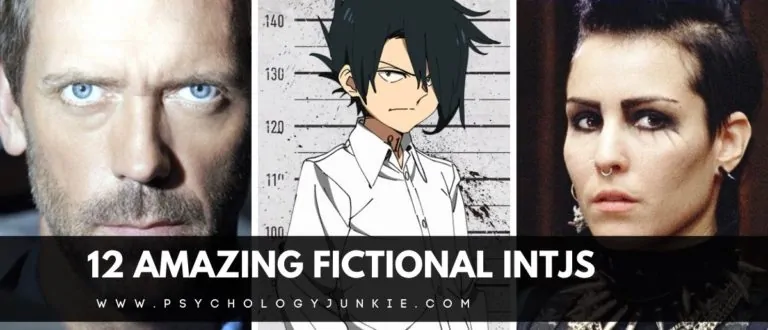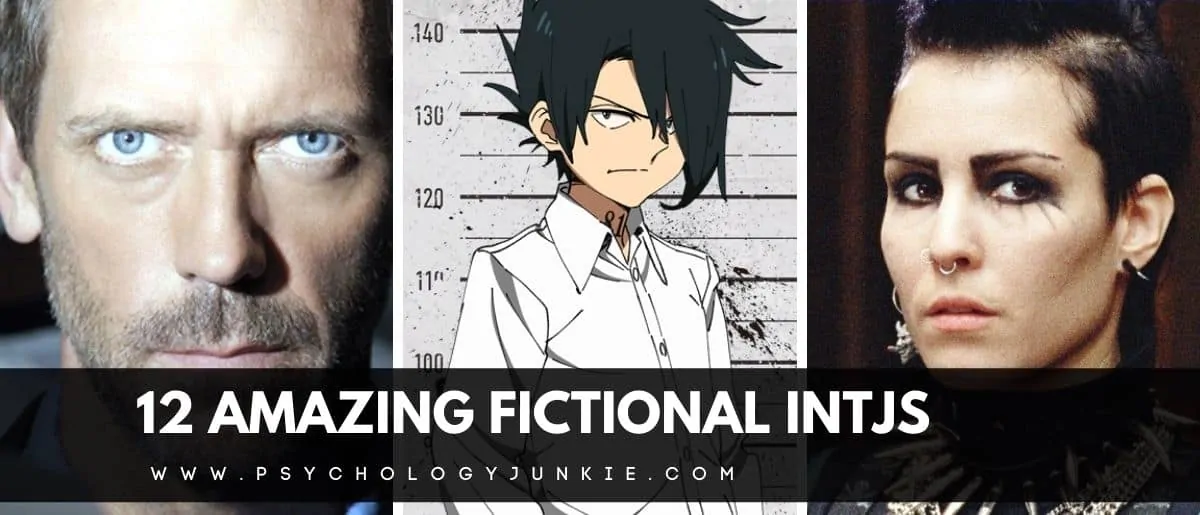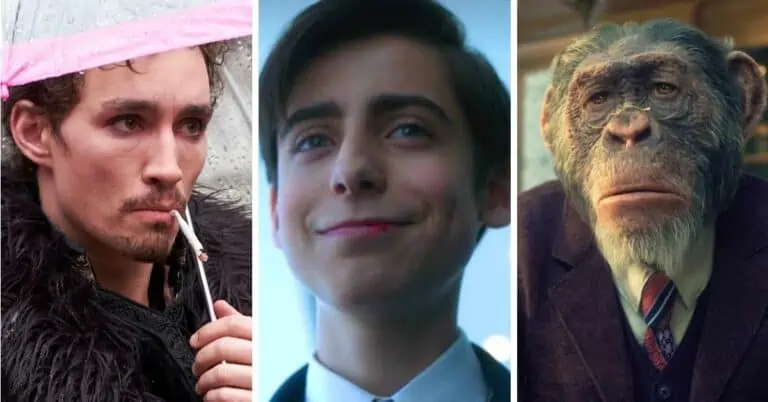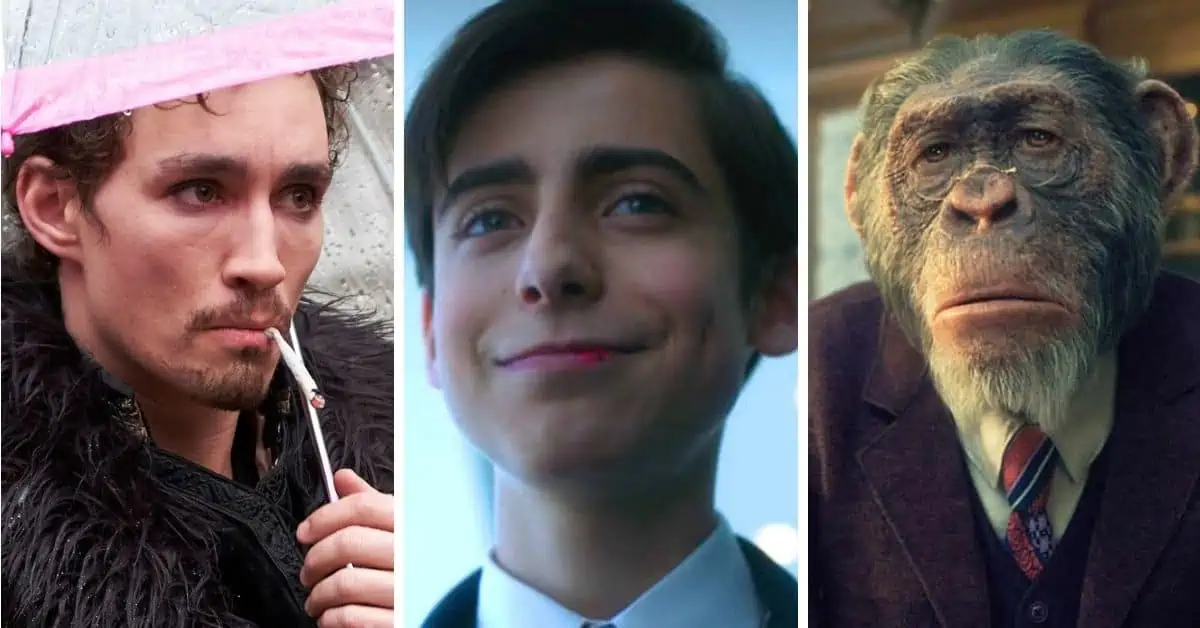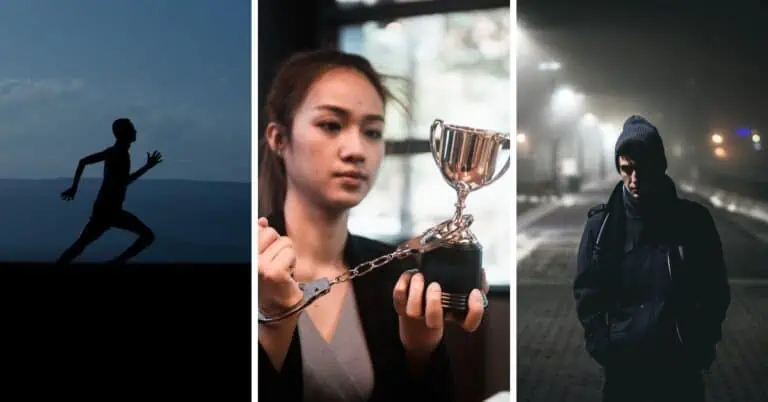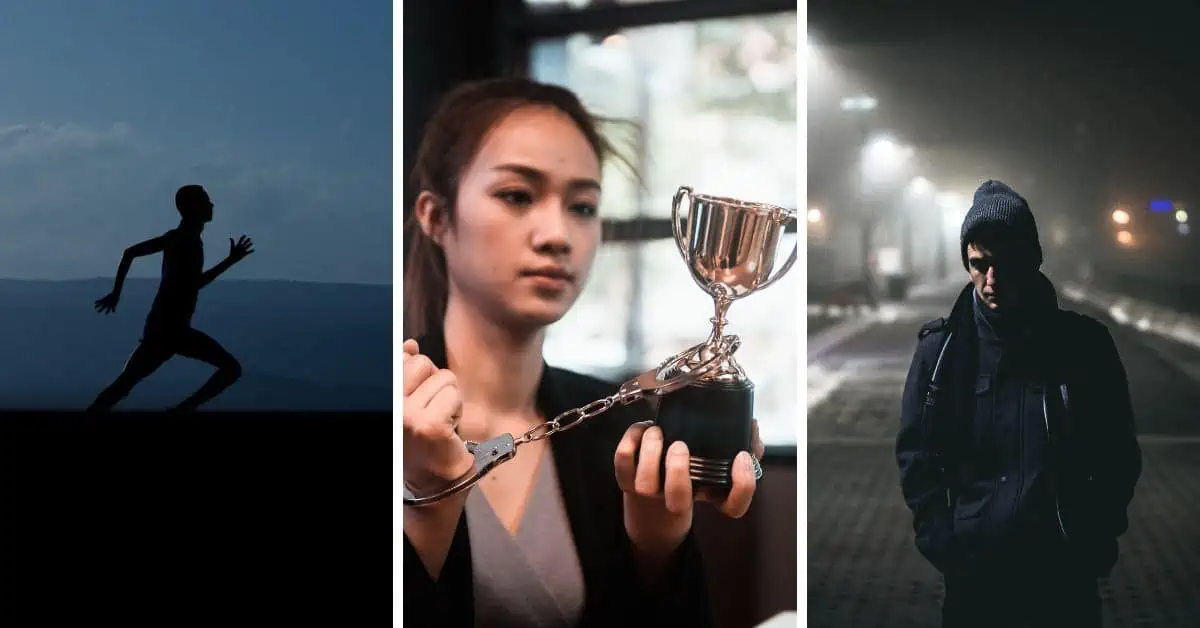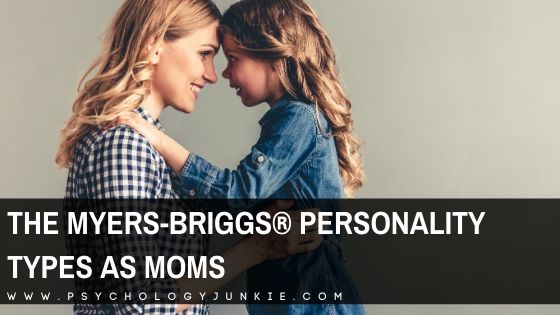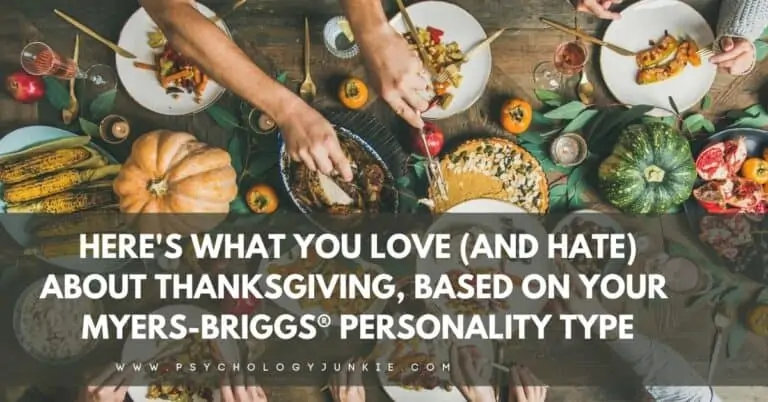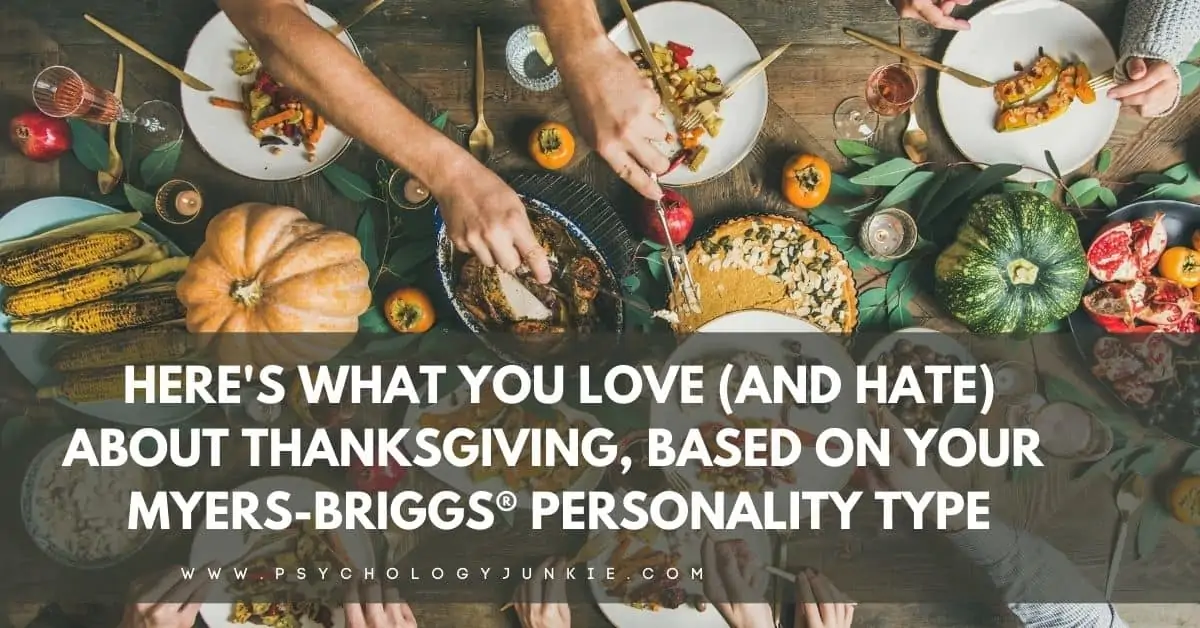40 Iconic Enneagram 4 Characters from Movies and Television
Want to find some iconic characters with your Enneagram type? Movies, books, and television shows can be amazing ways to learn about the depth and nuance of each Enneatype. I had a lot of fun chatting with other Enneagram experts and movie fans to create this list of characters. I hope you find a few movies or TV shows here to add to your Netflix watchlist!
For those of you who are not familiar with the Enneagram, it is a personality system that consists of nine different types. Each type has its own unique set of characteristics, fears, desires, strengths, and weaknesses. You can find out more about the Enneagram in my introductory article on the subject. You can also find out what your Enneagram type is by taking our questionnaire.
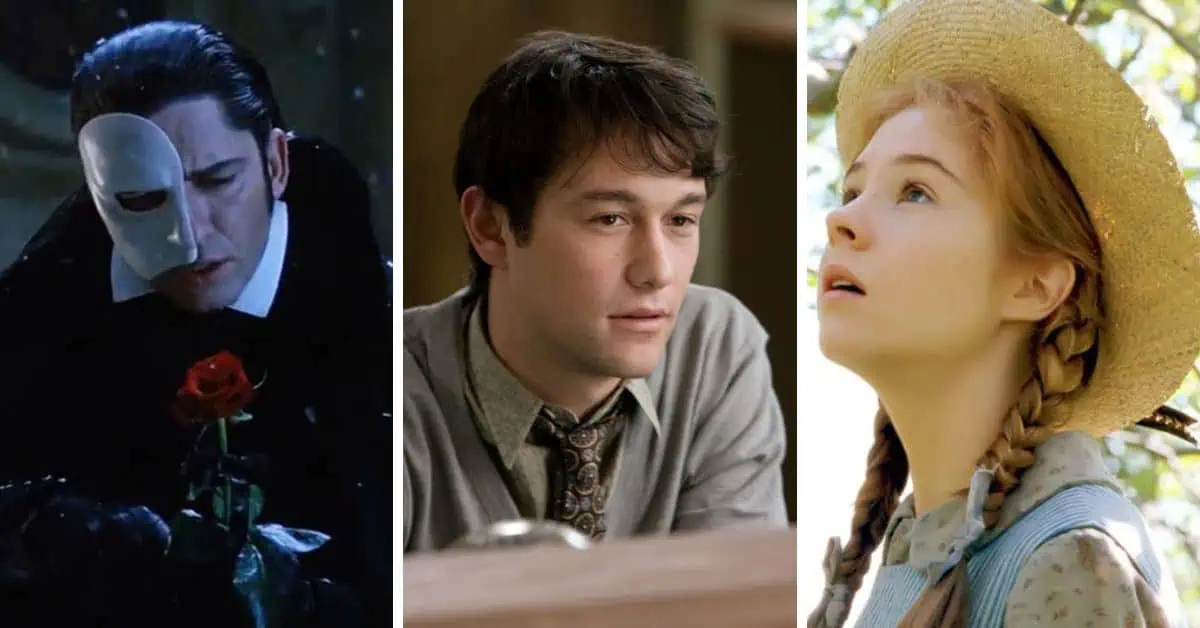
40 Iconic Enneagram Four Characters from Movies and Television
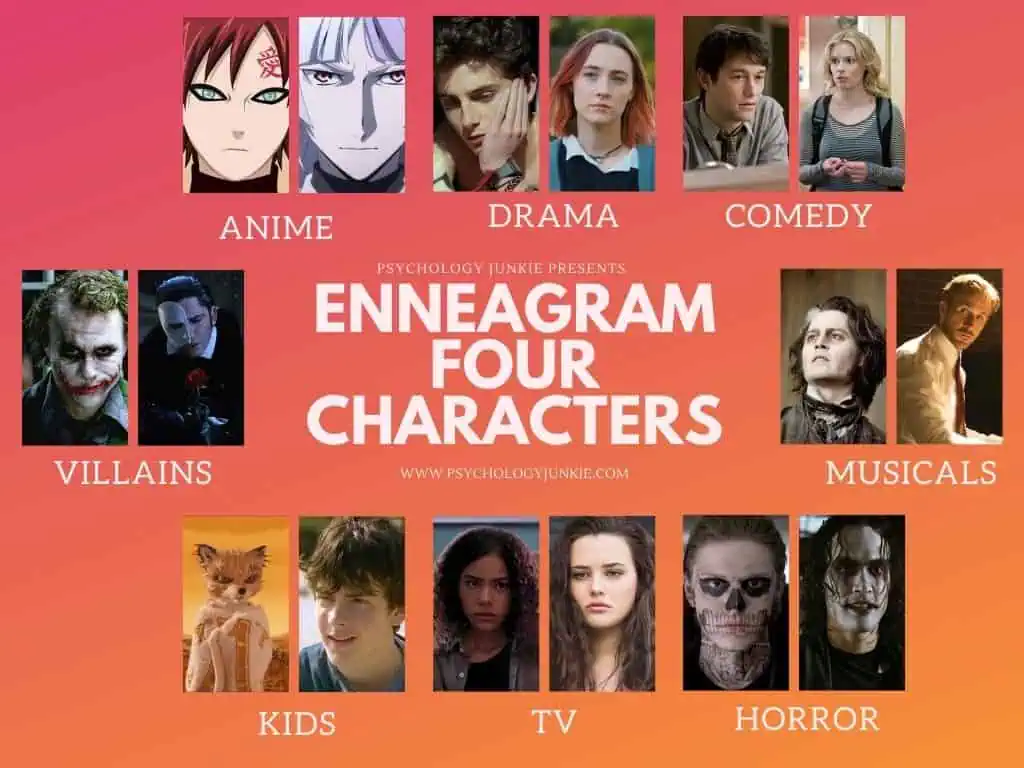
1. Janis Ian (Mean Girls)
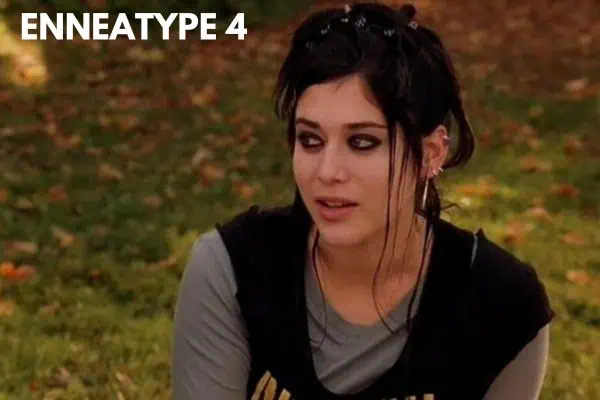
“See, at least me and Regina George know we’re mean! You try to act so innocent like, “Oh, I use to live in Africa with all the little birdies, and the little monkeys!”” – Janice Ian
Janis’s outsider status in Mean Girls is classic Four behavior. She refuses to conform, embracing her uniqueness with a kind of rebellious pride. Like many Fours, Janis feels deeply misunderstood, especially after her fallout with Regina George, which fuels her mistrust and cynicism toward the high school social scene. Her 3-wing shows up in her desire to make a statement and prove herself—whether it’s through her edgy appearance or her schemes to expose the truth about the Plastics. Janis channels her emotional intensity into her art and her mission to bring Regina down, but underneath her rebellious exterior, she still longs for genuine connection and loyalty from her friends.
2. Belle (Beauty and the Beast)
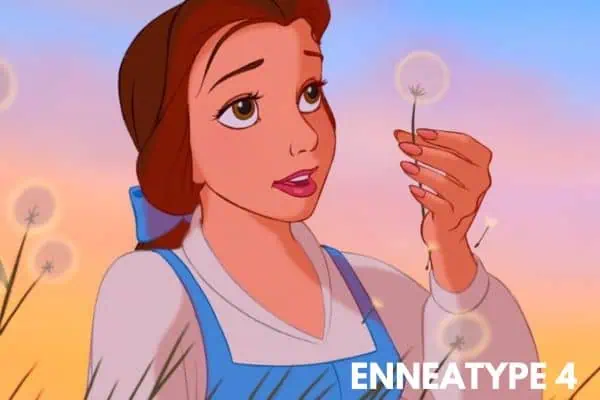
“I want so much more than they’ve got planned.” – Belle
Belle is the ultimate romantic, longing for more than the provincial life she’s trapped in. Her love for books and imagination fuels her desire to be different. She’s drawn to the misunderstood Beast because she identifies with feeling out of place and needing deeper emotional connection than the shallow affections of Gaston.
3. Scar (The Lion King)
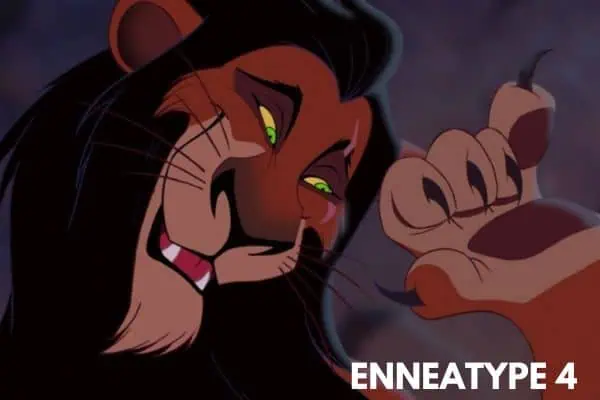
Simba: You’re so weird.
Scar: You have no idea.
Scar is a darker depiction of the Four’s envy. He’s perpetually overshadowed by his brother Mufasa and seethes with bitterness. Scar channels his intense feelings into crafting plans that are as cunning as they are emotionally charged. He’s a perfect example of an unhealthy Four’s envy fueling destructive tendencies.
4. Anne Shirley (Anne of Green Gables)
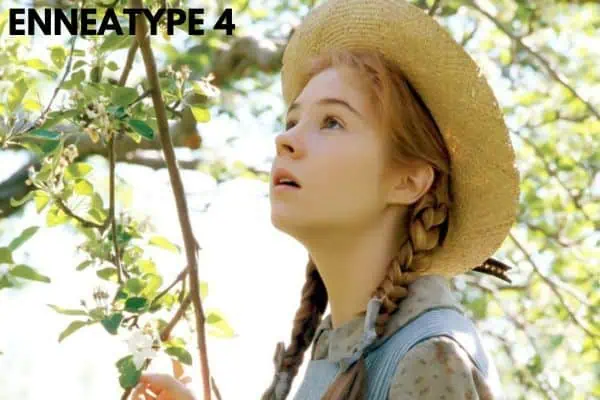
“It’s just that my life is a perfect graveyard of buried hopes now. That’s a sentence I read once and I say it over to comfort myself in these times that try the soul.” – Anne Shirley
Anne Shirley from Anne of Green Gables is a classic Enneagram 4, driven by her deep need to be different and to express herself in ways that feel true to her heart. From the moment she steps into Green Gables, she brings her vivid imagination, romantic ideals, and emotional intensity into every corner of her life. Anne often feels like she doesn’t quite belong—whether it’s because of her appearance, her orphan background, or her imaginative flights of fancy. But rather than hiding her differences, she embraces them, seeing her uniqueness as a gift, even when it sets her apart from others. Her emotional highs and lows are classic Four behavior, swinging from the depths of despair to the heights of joy. Anne’s 3-wing shows up in her desire to achieve, to be loved, and to make a mark on the world—whether it’s through her schoolwork, her writing, or her relationships. She longs for connection but only on her own terms, where she can be authentically herself, quirks and all.
5. Heinz Doofenshmirtz (Phineas and Ferb)
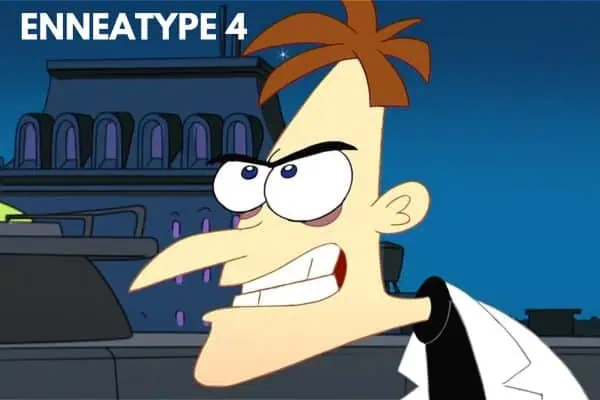
“So, how does it feel to be a loser, Perry the Platypus? I mean, that’s a rhetorical question. Course, if anyone should know how it feels, it should be me.” – Heinz Doofenshmirtz
Dr. Doofenshmirtz is driven by a tragic backstory of rejection and neglect—prime fodder for a Four’s sense of inadequacy. His quirky inventions are expressions of his creative, misunderstood genius. He’s constantly trying to prove his worth through bizarre schemes, driven by deep-seated feelings of inferiority and a need to be recognized as special.
6. Amelia Brand (Interstellar)
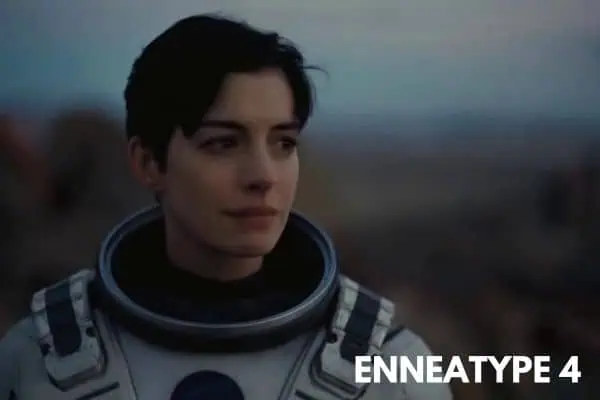
“I’m drawn across the universe to someone I haven’t seen in a decade, who I know is probably dead. Love is the one thing we’re capable of perceiving that transcends dimensions of time and space. Maybe we should trust that, even if we can’t understand it.”
Amelia’s journey through space is as much about finding meaning and emotional connection as it is about scientific exploration. Her intense belief in love as a transcendent force reflects a Four’s romanticism and idealism, even when faced with the harsh realities of space and time.
7. The Joker (Batman: The Dark Knight)
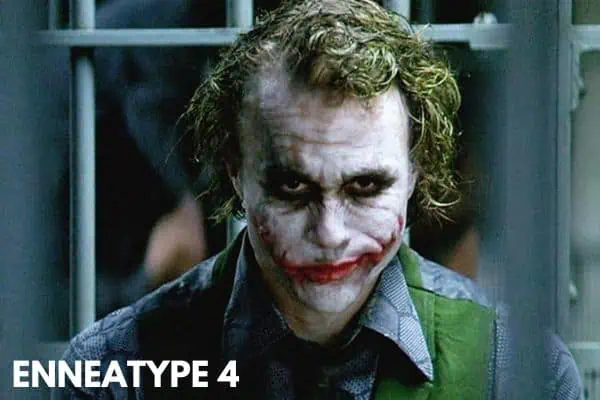
“In their last moments, people show you who they really are.” – The Joker
The Joker is another example of a highly unhealthy Four, with his deep-seated belief that society is corrupt and meaningless. His need to stand apart from the norm—through chaos, violence, and disorder—reflects his rejection of mainstream values. The Joker’s erratic, deeply emotional nature reveals a dark side of the Four’s intense individuality.
8. Mei Misaki (Another)
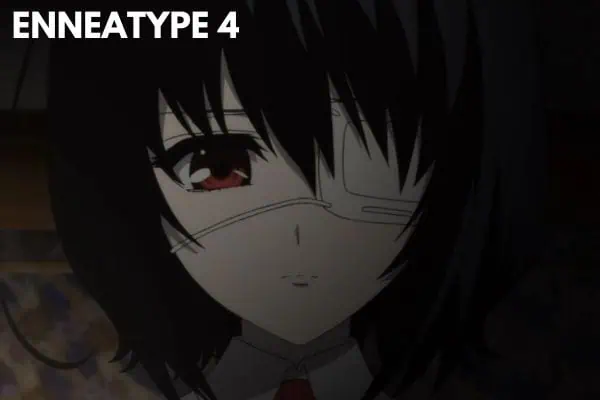
“No matter how many relationships we seem to have, we’re all alone.” – Mei Misaki
Mei is withdrawn, mysterious, and seems haunted by secrets. Her mysterious presence has earned her the name, “the one that does not exist.” She’s content to remain on the fringes of her school society, sketching, and isolating herself. But while Mei’s oddness makes her an outsider, she wears her difference like armor—a classic Four trait.
9. Eeyore (Winnie the Pooh)
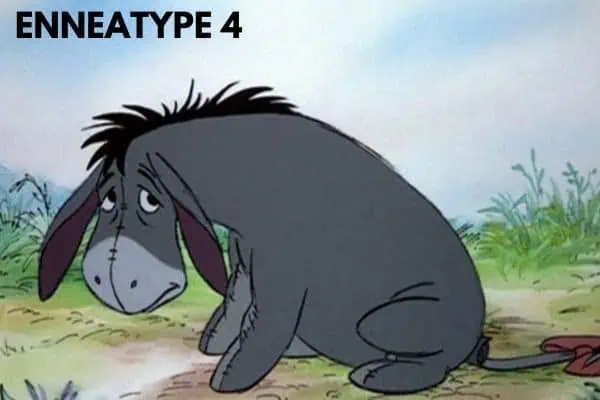
“I was so upset, I forgot to be happy.” – Eeyore
Eeyore is the melancholic Four, always seeing the glass half empty. He tends to wallow in his sadness, convinced that he’s perpetually forgotten or not good enough. Despite this, he is a reliable friend, and is often counted on as a source of help during hard times.
10. Anakin Skywalker (Star Wars)
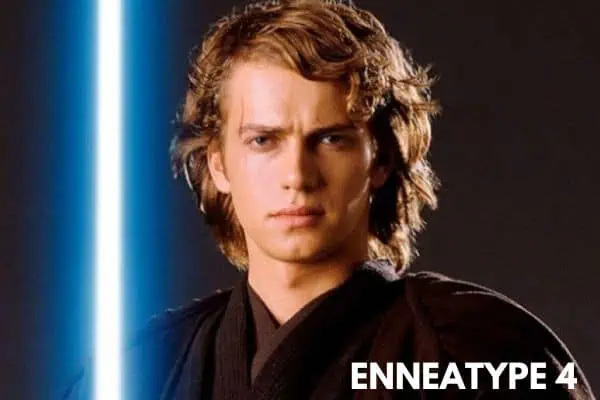
“I see through the lies of the Jedi. I do not fear the dark side as you do.” – Anakin Skywalker
Anakin embodies the Four’s intense longing to be unique while also striving for significance (the Three-wing). His entire arc is driven by a desire to be extraordinary, to stand out, and to be acknowledged for his power and feelings. His emotional intensity drives him to the dark side—he’s constantly wrestling with feeling misunderstood and alienated, typical of a Four in unhealthy spaces.
11. Severus Snape (Harry Potter)
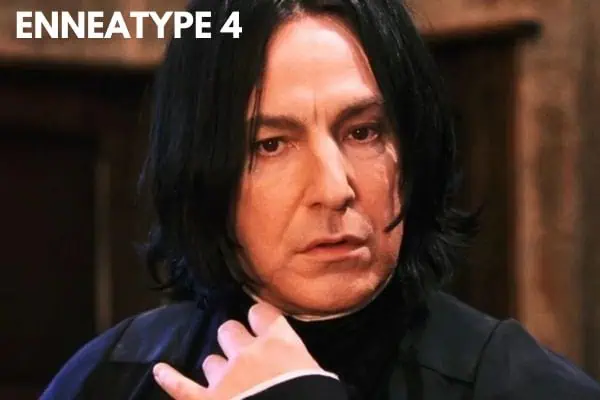
Dumbledore watched her fly away, and as her silvery glow faded he turned back to Snape, and his eyes were full of tears.
“After all this time?”
“Always,” said Snape.”
Snape is a textbook example of the withdrawn, brooding Four. His entire life is fueled by unrequited love and the deep emotional scars he carries from childhood. His envy of James Potter and his intense loyalty to Lily exemplify the way that some Fours can get “stuck” on certain memories, relationships, and narratives, unable to break free. But in the end, Snape’s heroism and selflessness make him one of the most heroic characters in the Harry Potter story.
12. Junpei Yoshino (Jujutsu Kaisen)
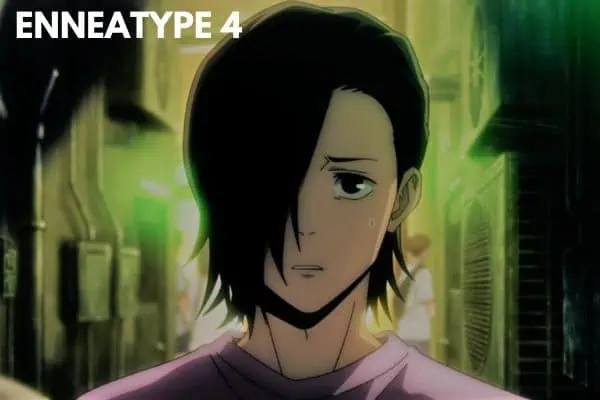
“I already know how repulsive humans can be. That’s why I don’t expect anything from other people.”
Junpei’s loneliness and desire for revenge are driven by the emotional pain of being bullied and isolated. Like many Fours, he’s deeply sensitive and feels misunderstood by the world around him. His descent into darkness reflects the unhealthy side of a Four’s tendency to let emotional pain dictate their actions.
13. Tracy Freeland (Thirteen)
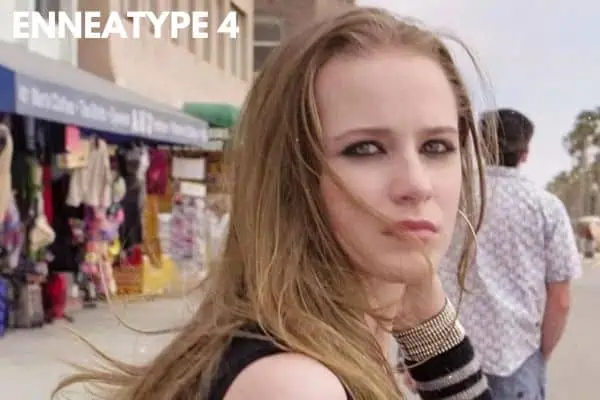
Tracy’s whirlwind journey through adolescence is filled with the emotional intensity and identity struggles characteristic of an Enneagram Four. She’s constantly searching for meaning, belonging, a sense of identity and significance. Unfortunately, that search leads her into dangerous, self-destructive territory.
14. Jonathan Ohnn “The Spot” (Spider-Man: Across the Spider-Verse)
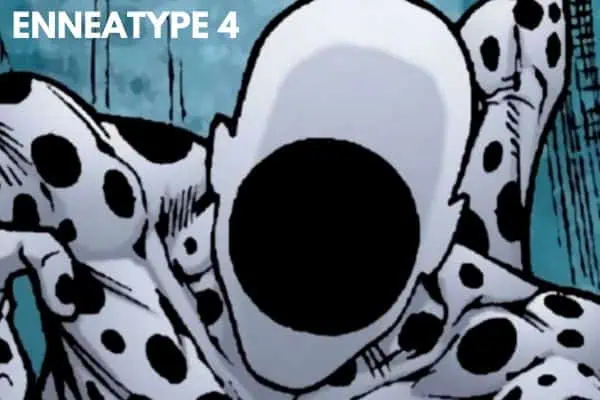
“The power of the multiverse in the palm of my hand. My holes aren’t a curse, they’re the answer!” – Jonathan Ohnn
Jonathan begins as an awkward, overlooked villain but develops into a deeply dangerous adversary, driven by his desire to be taken seriously. His transformation into The Spot reflects his struggle with identity and purpose—common to a Four—craving recognition for his uniqueness, even if it’s through villainy.
15. Edmund Pevensie (The Chronicles of Narnia)
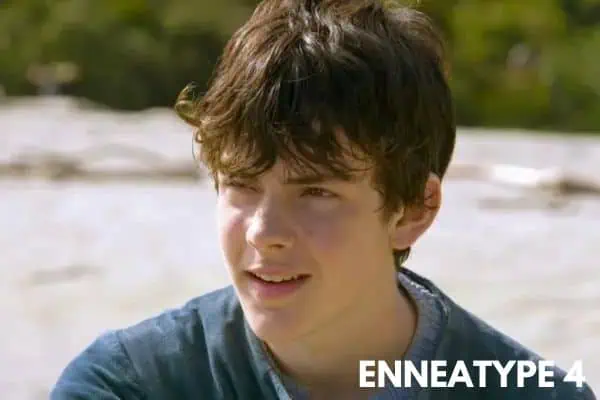
″‘It is very true,’ said Edmund. ‘But even a traitor may mend. I have known one that did.’ And he looked very thoughtful.” – C.S. Lewis
Edmund’s journey in The Lion, the Witch, and the Wardrobe is marked by feelings of inferiority and envy, which drive him to betray his siblings for a sense of power and uniqueness. His redemption arc is one of self-acceptance, bravery, and understanding. He reaches out to the people around him and courageously faces his future rather than fixating on his own feelings of inadequacy.
16. Josephine “Jo” March (Little Women)
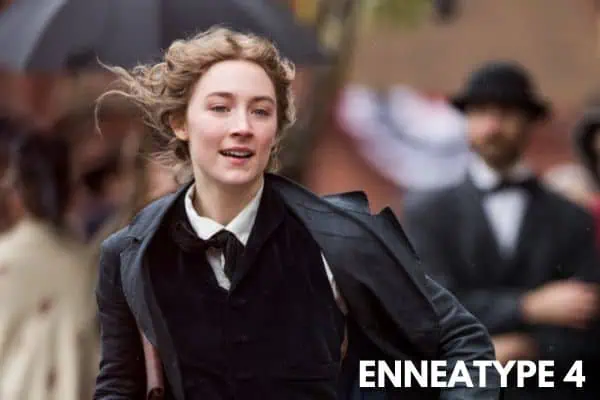
“You are the gull, Jo, strong and wild, fond of the storm and the wind, flying far out to sea, and happy all alone.”
Jo March is the embodiment of the artistic, independent Four. She doesn’t fit into the traditional female roles of her time, and she expresses her emotions through her writing. Her longing for both independence and deep emotional connection shows the conflict many Fours experience between wanting to imagine and idealize while also having to face the harsh realities of a world that doesn’t match those same ideals.
17. Christine “Lady Bird” McPherson (Lady Bird)
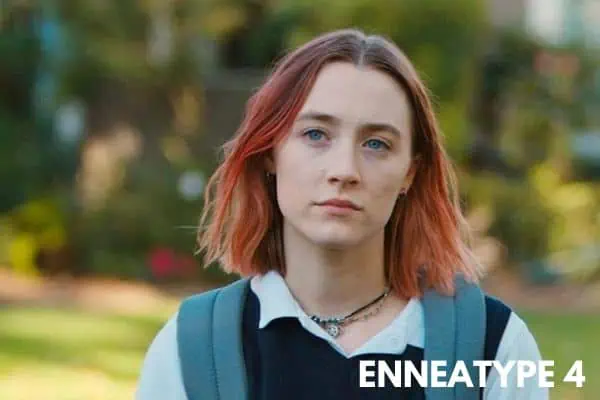
- Christine ‘Lady Bird’ McPherson: No, I mean, I just, I wish that you liked me.
- Marion McPherson: Of course I love you.
- Christine ‘Lady Bird’ McPherson: But do you like me?
Lady Bird’s entire coming-of-age journey is about discovering who she is, separate from her family and her Sacramento roots. Fours are known for their emotional depth and intensity, and Lady Bird exhibits this throughout the film. Her emotions can shift dramatically, from anger and frustration with her mother to moments of profound vulnerability and sensitivity. This emotional intensity often isolates her from those around her, as she struggles to communicate the depth of what she’s feeling in a world that often feels too shallow or uncaring for her tastes. Her outbursts and passionate declarations reveal that she feels things deeply and craves that same depth in her relationships.
18. Kylo Ren (Star Wars)
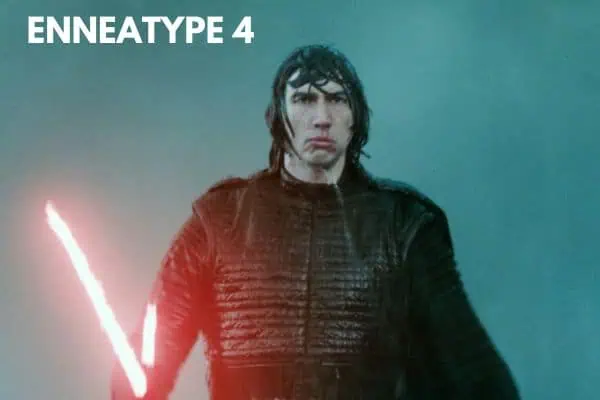
“I’m being torn apart. I want to be free of this pain.”
Kylo Ren, also known as Ben Solo, perfectly embodies the inner turmoil of an Enneagram 4, particularly with a 5-wing. From the moment he appears on screen, he radiates emotional intensity, deeply tormented by his divided identity and the feeling that he doesn’t truly belong anywhere. Like many Fours, Kylo is in a perpetual state of internal conflict—caught between the light and dark sides of the Force, between his legacy as the son of heroes and his longing for power and recognition. This split reflects the Four’s desire to be different and unique, as well as their constant struggle with a sense of inadequacy and alienation. Kylo’s emotions run deep and often drive him to act impulsively; he experiences envy, anger, and sorrow with a volatility that speaks to his Fourish need for catharsis. Kylo’s connection to his Five-wing is evident in his withdrawn, introspective nature, particularly his obsessive search for knowledge and power as a way of compensating for his perceived flaws. He constantly seeks to understand the Force on a deeper level, trying to fill the emotional void within him. However, his intellectual pursuits only further isolate him, exacerbating his feeling of being misunderstood and alone.
19. Ash (Fantastic Mr. Fox)
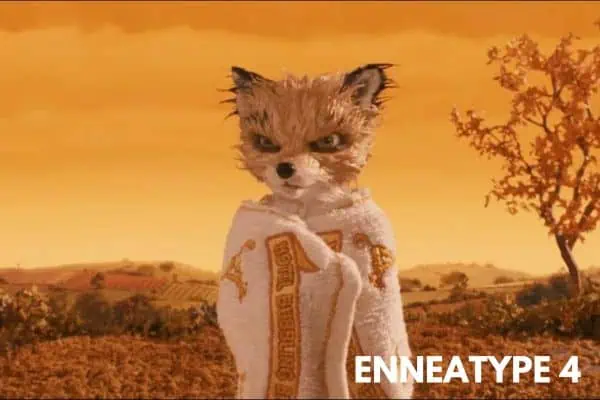
“Me? ME have an apology? He gets a bandit hat? He just got here, and he gets a bandit hat? Where’s MY bandit hat? Why didn’t I get shot at? It’s because, you… you… you think I’m no good at anything! Well, maybe you’re right, thanks.” – Ash
From the outset, Ash is portrayed as different from the other animals, both physically and emotionally. He longs to be seen as exceptional, particularly in the eyes of his father, Mr. Fox, but his efforts are often met with disappointment or misunderstanding. Like many Fours, Ash grapples with feelings of inadequacy, frequently comparing himself to others, especially his more traditionally talented cousin Kristofferson. His envy and insecurity stem from his desire to be extraordinary, leading him to act out in impulsive, sometimes reckless ways in a bid for attention and validation. His connection to his 3-wing shows up in his competitive nature and his determination to prove his worth, even if it means taking dangerous risks.
20. Sigma (Bungou Stray Dogs)
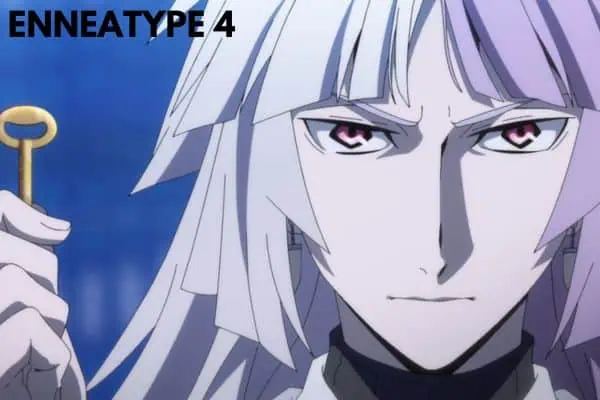
“Honestly, I envy those eyes of yours. I doubt I’ll ever feel anything with eyes so strong again…In the end, I never did understand what I was born for.” – Sigma
Sigma’s life is marked by a deep sense of alienation and longing for a place to belong. Born without a true past or origin, Sigma embodies the 4’s constant struggle with feeling different and disconnected from the world around him. This sense of being an outsider drives him to seek meaning and validation in a chaotic, often hostile environment. Like many Fours, Sigma is deeply introspective and emotionally intense, experiencing feelings of inadequacy and a persistent need to define himself beyond the shadows of others. His envy towards those with a clear sense of self and purpose fuels his emotional turmoil, pushing him to obsessively search for his place in the world.
21. Sebastian “Seb” Wilder (La La Land)
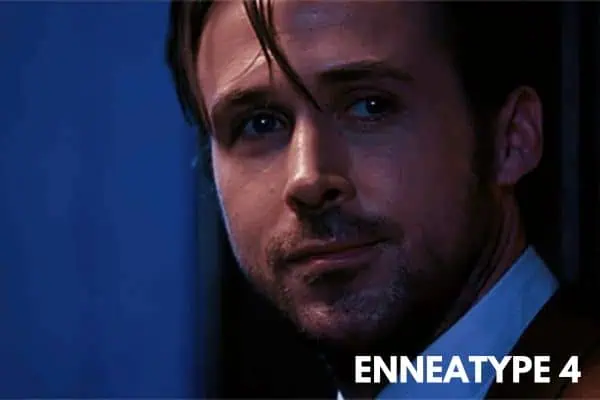
“That’s L.A. They worship everything and they value nothing.” – Sebastian Wilder
Seb’s passion for jazz and his determination to preserve its authenticity reflect a Four’s deep attachment to their ideals and their need to express themselves creatively. Seb is constantly torn between following his heart and making practical sacrifices, a struggle that is all too familiar to Fours. His emotional highs and lows, combined with his dream of creating something extraordinary, make him a classic Four.
22. Kat Hernandez (Euphoria)
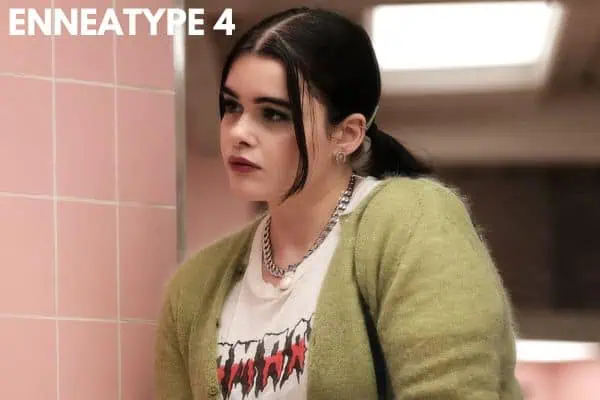
“I am a walking contradiction.” – Kat Hernandez
Kat struggles with her identity throughout Euphoria, often grappling with feelings of being an outsider. Her exploration of self-expression, particularly through her online persona, helps us see her search for a unique identity. She’s driven by a need to be different, even as she battles insecurities and the desire to be loved for who she truly is.
23. Tate Langdon (American Horror Story)
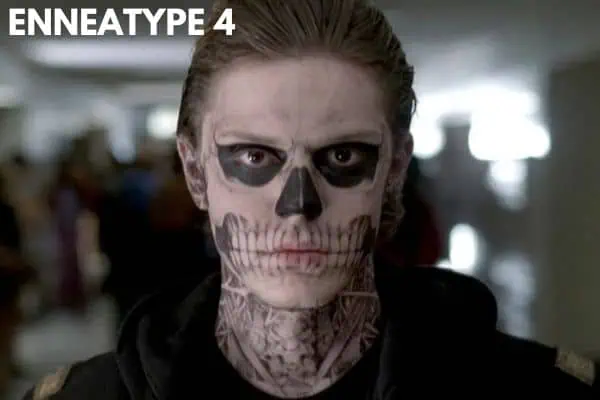
“I prepare for the noble war. I’m calm, I know the secret. I know whats coming and I know no one can stop me not even myself.” – Tate Langdon
Tate embodies the darker side of the Four’s emotional intensity. He’s consumed by feelings of alienation and uses his emotional pain as justification for his destructive actions. His need for connection, even when twisted, is classic Four behavior, as is his deep internal struggle with feeling unseen and unloved.
24. Virginia “Ginny” Miller (Ginny & Georgia)
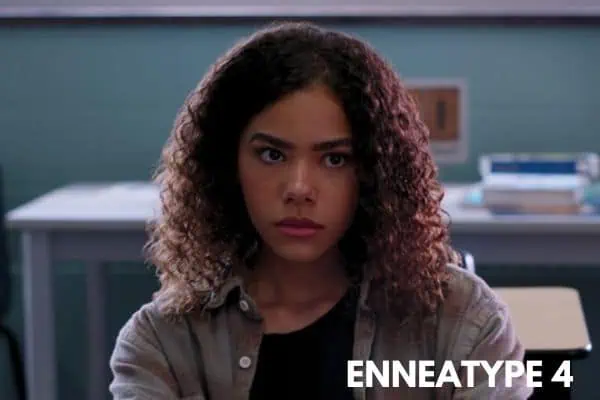
“Love. Everyone thinks love is so beautiful. Such a fairytale.” – Ginny Miller
Ginny Miller from Ginny & Georgia is an Enneagram 4w3, struggling with her identity, emotions, and the complex dynamics of growing up under her mother’s shadow. This tension shows up when she challenges her teacher’s outdated syllabus or confronts her mother’s constant upheavals, all while searching for something more meaningful in her life. Ginny’s journey is one of balancing her need to define herself with the influence of her mother’s choices, all while trying to find where she fits in the world around her.
25. Britta Perry (Community)
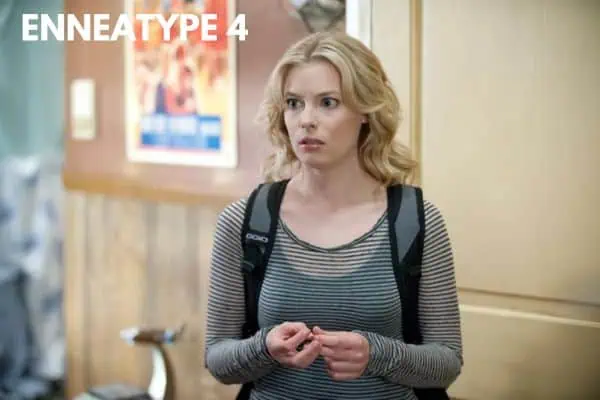
“If loving worms is stupid, I don’t wanna be smart!” – Britta Perry
Britta Perry from Community is an Enneagram 4w3 who struggles with the contradiction of wanting to be both deeply unique and yet accepted by those around her. She prides herself on being a nonconformist, often taking up causes or viewpoints that set her apart from the group. She struggles with feelings of being misunderstood or undervalued, often seeing herself as more insightful or morally evolved than those around her, even if it doesn’t always come across that way. Her 3-wing pushes her to try and impress others—whether through her activism, her intellect, or her desire to be seen as someone who is fighting for a greater cause. Yet despite this, Britta is often vulnerable and unsure of herself, frequently caught between her need to be different and her deep-seated desire for validation and belonging.
26. Hannah Baker (13 Reasons Why)
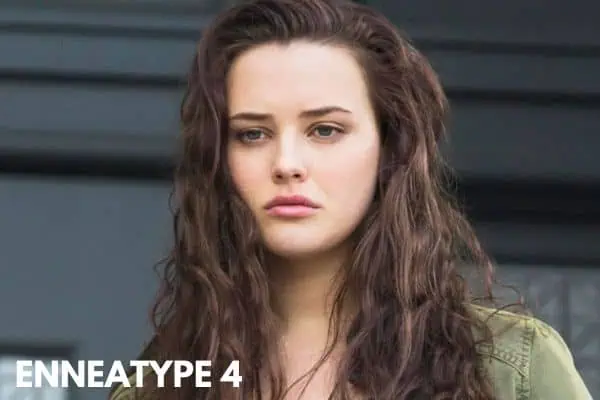
“Hello boys and girls. Hannah Baker here. Live and in stereo. No return engagements, no encore, and this time absolutely no requests. I hope you’re ready, because I’m about to tell you the story of my life. More specifically, why it ended. And if you’re listening to these tapes, you’re one of the reasons why.” – Hannah Baker
Like many Fours, Hannah experiences life intensely, feeling deeply misunderstood and disconnected from her peers. Her sense of being different leads her to internalize the pain and bullying she endures, ultimately manifesting in her tragic decision to take her own life. The 3-wing in Hannah drives her desire to be seen and acknowledged, to have her voice heard in a world that often silences or overlooks her struggles. This wing also fuels her need for external affirmation, making the betrayals she experiences even more devastating. Throughout the series, Hannah’s recordings of her story on the tapes show us a need for emotional catharsis and expression, as she uses them to communicate her deep-seated hurt and to try to make sense of her experiences.
27. Gaara (Naruto)
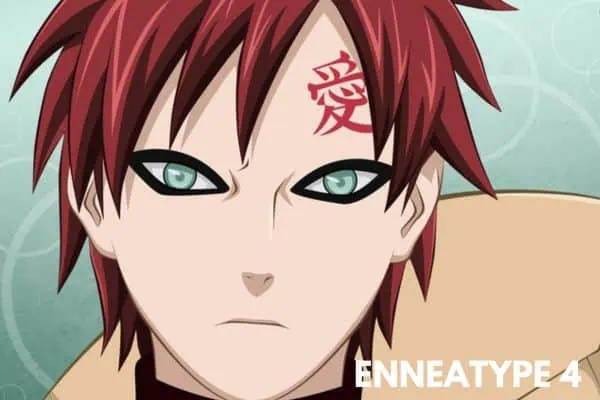
“Peace Under An Illusion Is Not True Peace”
As a child, Gaara was feared and rejected by everyone around him, leaving him emotionally scarred and convinced that his existence had no value unless it involved power and destruction. Like many Fours, Gaara internalizes this pain and alienation, seeing himself as fundamentally different from others and unable to connect on any meaningful level. His 5-wing adds a layer of introspection and detachment, pushing him to withdraw further into himself as he tries to make sense of his identity and the hatred he feels. Gaara’s intense emotions and need to be seen and understood drive much of his early actions, but his journey toward healing begins when he realizes that his worth isn’t defined by fear or power.
28. Lydia Deetz (Beetlejuice)
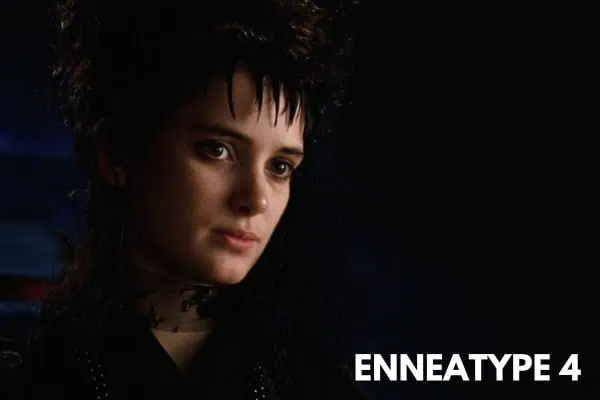
“I am utterly alone.” – Lydia Deetz
Lydia’s fascination with death and the macabre, combined with her deep sense of being an outsider, makes her one of the most iconic Fours on the big screen. She embraces her uniqueness with pride, and her longing for connection with the ghostly world reflects a Four’s desire to find something deeper and more meaningful beyond the surface of reality.
29. Rose Dewitt Bukater (Titanic)
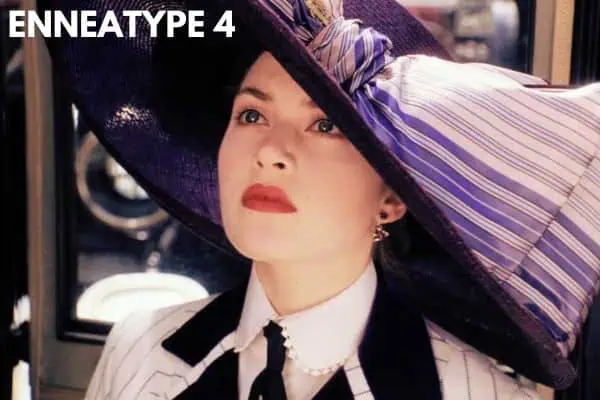
“I know what you must be thinking. “Poor little rich girl, what does she know about misery?” – Rose Dewitt Bukater
Rose is stifled by the conventions of her upper-class life, longing for more freedom and emotional depth. Her connection with Jack represents her escape into a world of passion, adventure, and self-expression—a world where she can finally be her authentic self.
30. Tom Hansen (500 Days of Summer)
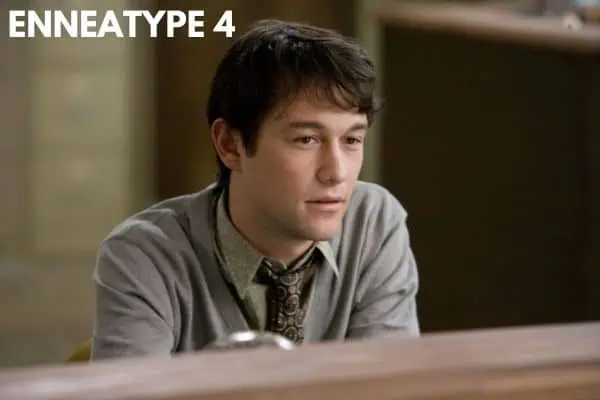
“People don’t realize this, but loneliness is underrated.” – Tom Hansen
Tom’s idealization of love and his tendency to put Summer on a pedestal reflect a Four’s romanticism. He’s deeply introspective, often stuck in his feelings, and spends much of the movie grappling with his own emotional responses to rejection. Tom’s quest for a love that feels profound and meaningful is a classic Four motivation.
31. George Glooman (Spy X Family)
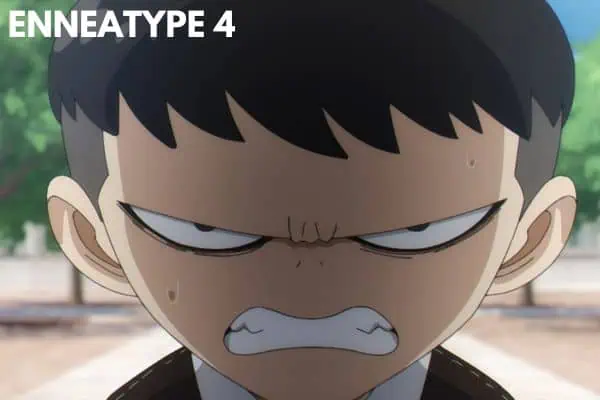
Like many Fours, George is sensitive to feelings of injustice, especially when it affects him personally, as seen in his jealousy toward Damian Desmond and his family’s success. Yet beneath his scheming, George is vulnerable, easily hurt by the way others treat him. His farewell to his classmates shows his underlying need for connection, even as he struggles with feelings of isolation. His 3-wing shows up in moments where he tries to impress or influence those around him, but his deeper sensitivity and self-awareness emerge when he advises Anya not to lie, revealing his regret over the very behavior that contributed to his own status as an outcast.
32. Eric Draven (The Crow)
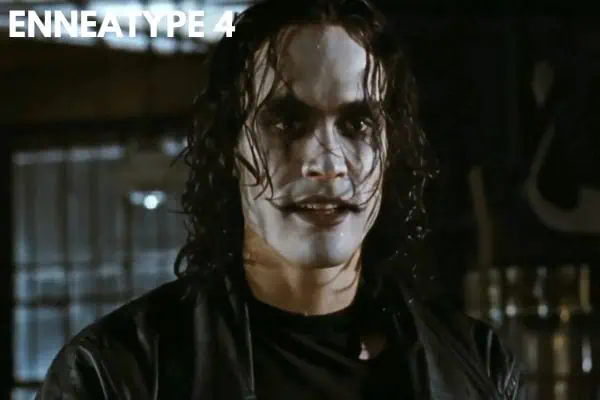
“Can’t rain all the time…” – Eric Draven
Eric is driven by intense feelings of love and loss, which fuel his quest for vengeance. His emotional pain is palpable, and his brooding, poetic nature highlights a Four’s need to express their deepest feelings. His return from the dead to avenge his fiancée’s murder is a dark, dramatic representation of an unhealthy Four’s obsessiveness and hunger for revenge.
33. Elio Perlman (Call Me By Your Name)
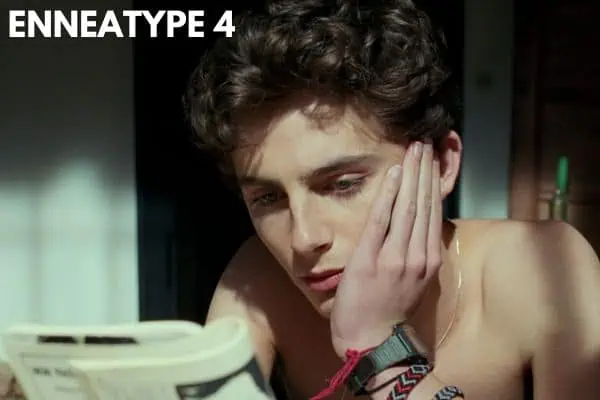
“And on that evening when we grow older still we’ll speak about these two young men as though they were two strangers we met on the train and whom we admire and want to help along. And we’ll want to call it envy, because to call it regret would break our hearts.” – Elio Perlman
Elio is constantly observing the world around him, filtering his experiences through a lens of beauty, desire, and melancholy. Like many Fours, he is drawn to the unique and the profound, finding himself captivated by the complexities of love and identity. His 5-wing adds a layer of intellectual curiosity, causing him to retreat into books, music, and solitary reflection as he tries to make sense of his swirling emotions. Elio craves intimacy and connection but is also guarded, unsure of how to fully express the depth of his feelings. His relationship with Oliver brings out both his vulnerability and his fear of losing something deeply meaningful, leaving him at times isolated in his own inner world. The longing, the beauty, and the ache of first love are central to Elio’s experience, making him a perfect embodiment of the sensitive, introspective Four.
34. Celine (The Before Trilogy)
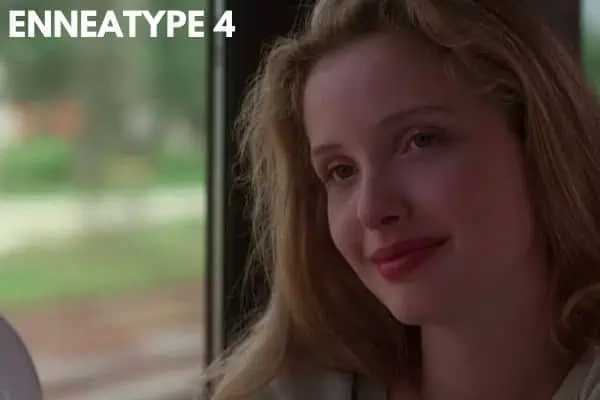
“I believe if there’s any kind of God it wouldn’t be in any of us, not you or me but just this little space in between. If there’s any kind of magic in this world it must be in the attempt of understanding someone sharing something. I know, it’s almost impossible to succeed but who cares really? The answer must be in the attempt.” – Celine
Like many Fours, Celine often feels like she’s living on the edge of something profound, always yearning for a deeper experience that eludes her. Her 5-wing gives her a reflective, intellectual side, leading her to analyze her emotions and relationships in a way that sometimes distances her from others. Celine craves understanding and connection but is also guarded, fearful that opening herself up completely will only lead to disappointment. In her conversations with Jesse, she reveals her vulnerability, her longing, and her fear that life has somehow passed her by, all while clinging to the hope that something more meaningful is still possible.
35. Davy Jones (Pirates of the Caribbean)
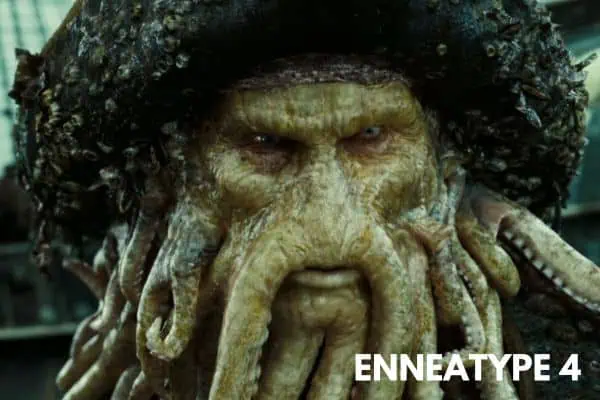
“Life is cruel. Why should the afterlife be any different?” – Davy Jones
Davy Jones’ story is one of deep emotional pain and longing. His love for Calypso and his subsequent heartbreak drive him to abandon his humanity, as he lets his emotional wounds consume him. His tragic backstory and his descent into bitterness and cruelty are typical of a deeply unhealthy Four who has lost hope in ever finding connection again.
36. Erik “The Phantom” (The Phantom of the Opera)
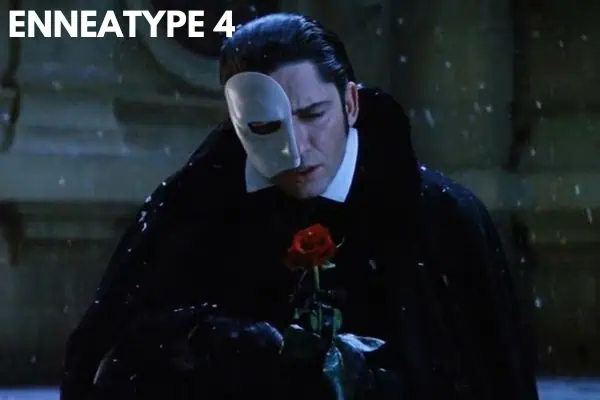
“If I am the phantom, it is because man’s hatred has made me so. If I am to be saved it is because your love redeems me.” – Erik, The Phantom
Erik, the Phantom of the Opera, is defined by his deep sense of isolation and longing for connection. Scarred both physically and emotionally, Erik hides away in the shadows, convinced that his deformity makes him unlovable. Like many Fours, he feels different from everyone else, yearning for a love and acceptance that he believes he can never have. His obsession with Christine isn’t just about love—it’s about his desperate need to be seen and understood by someone, to be recognized for more than his outward appearance. But his deep feelings of rejection and his inability to let go of his pain push him into destructive behaviors, trapping him in his own emotional torment.
37. Benjamin Barker “Sweeney Todd”
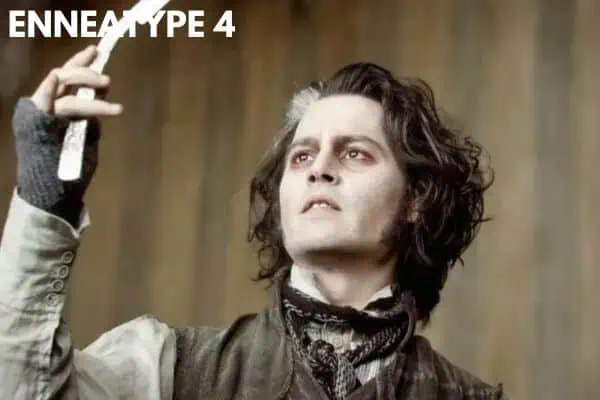
“There’s a hole in the world like a great black pit, and the vermin of the world inhabit it, and its morals aren’t worth what a pig could spit, and it goes by the name of London. At the top of the hole sit a privileged few, making mock of the vermin of the lower zoo. Turning beauty into filth and greed.” – Benjamin Barker
Sweeney Todd, formerly Benjamin Barker, is a dark portrayal of a 4w5, consumed by bitterness and loss. He’s driven by a deep well of emotional pain after the injustice that took his family away from him, and that pain turns into a need for revenge. Like many Fours, Sweeney feels deeply misunderstood and disconnected from the world, his grief setting him apart from others. His 5-wing pushes him further into isolation, retreating into his dark thoughts and obsessive plotting. His razor becomes his tool for expressing the anger and sorrow he carries, as his need for justice morphs into something more sinister. Sweeney is trapped in his own emotional world, constantly wrestling with his feelings of betrayal and longing for a past that’s long gone. His intensity and focus on his pain blind him to anything that could bring him healing, making him both tragic and dangerous. His obsession with making others feel his pain reflects the unhealthy Sexual Four’s tendency to become consumed by their emotions and want to punish others for their pain.
38. Amelia Sacks (The Perfect Couple)
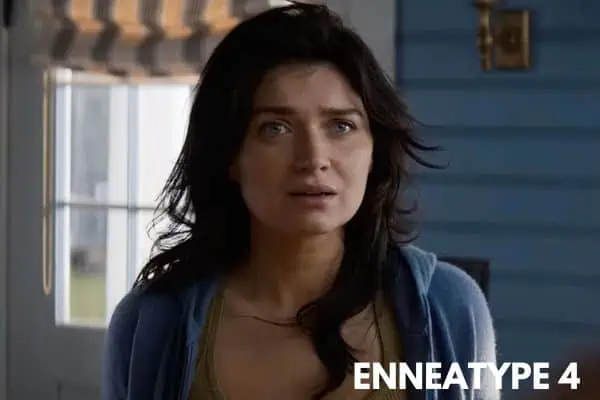
I just watched ‘The Perfect Couple’ this week, and immediately recognized Amelia’s Four tendencies. She wants an idealized relationship, to be with someone she literally can’t stop thinking about, rather than the seemingly ‘perfect’ relationship she already has. This hunger for something more, along with her authentic self-expression and inability to “fake it” like everyone else around her is peak Enneagram 4 behavior.
39. Penelope Featherington (Bridgerton)
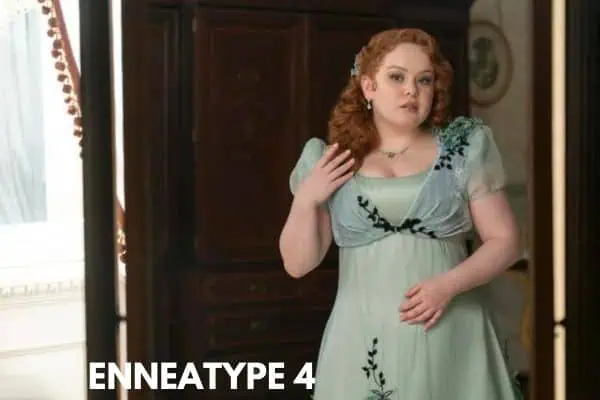
“They are mere fantasies, but I do believe we must allow ourselves those private moments so we may face reality armed with our reveries.” – Penelope Featherington
Enneagram Fours will probably relate to Penelope’s creating an alter-ego to deal with a world that doesn’t value her for who she really is. She longs to be seen and loved for who she truly is, yet she hides behind her writing, afraid of rejection, and needing an outlet for her observations and feelings. Penelope’s inner emotional world is rich and complex, filled with romantic ideals and fantasies that she protects fiercely.
40. Jenny Schecter (The L Word)
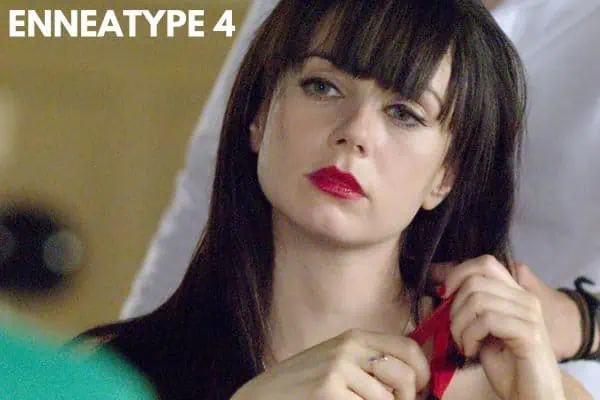
“I think I’ve been judged a lot. And, I don’t know, people here just think that I’m, like, this pariah.” – Jenny Schecter
Jenny is the embodiment of the tortured artist archetype. She pours herself into her writing, trying to express the parts of herself that she feels no one really sees. She craves authenticity in her relationships and life, but this drive sometimes leads her into self-destructive territory. Her 5-wing makes her more withdrawn, pushing her to retreat into her thoughts and creative projects when things get too overwhelming. Jenny often feels disconnected, like she’s on the outside looking in, even when she’s surrounded by people who care about her. It’s this constant battle between wanting to be understood and feeling like no one really gets her that defines so much of her struggle.
What Do You Think?
Do you relate to these characters? Do you despise them? Perhaps you’ve thought of some other characters that you think are Fours! Let me know your thoughts in the comments, I’d love to hear them! Find out more about your personality type in our eBooks, Discovering You: Unlocking the Power of Personality Type, The INFJ – Understanding the Mystic, and The INFP – Understanding the Dreamer. You can also connect with me via Facebook, Instagram, or Twitter!
Other Articles You Might Enjoy:
Enneagram 4 vs. 5: Which Are You?
Subscribe to Our Newsletter

Want to discover more about personality type? Get the inside scoop with Susan Storm on all things typological, along with special subscriber freebies, and discounts on new eBooks and courses! Join our newsletter today!


